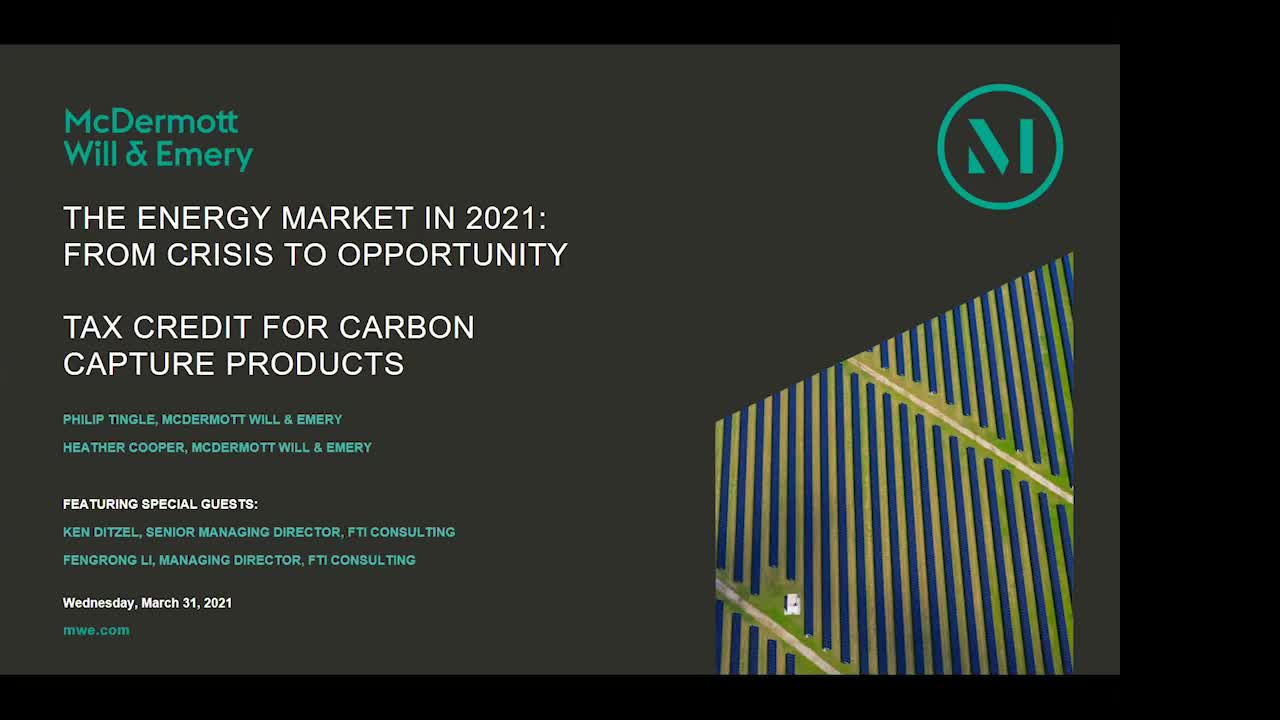The energy market has undergone significant change in the past 12 months, with even more on the horizon. Our webinar series explores how these changes have shaped—and will continue to impact—the energy industry, including discussions of what’s to come.
Our latest webinar featured FTI Consulting’s Ken Ditzel, Senior Managing Director and Fengrong Li, Managing Director, who are both in the Economic and Financial Consulting Practice.

Below are key takeaways from the webinar:
- The carbon capture and sequestration tax credit under section 45Q is an important source of predictable revenue for carbon capture projects. The section 45Q credit was substantially expanded in 2018 and is worth up to $50 per metric ton for carbon permanently sequestered and up to $35 per metric ton for carbon used as a tertiary injectant in connection with an enhanced oil or natural gas recovery project. Internal Revenue Service (IRS) guidance released last year and final regulations promulgated in January have provided more certainty for the market to move forward with carbon capture projects and claim the enhanced section 45Q credit.
- There are currently about 32 strong contender carbon capture projects in the US market. About half of the carbon capture projects are traditional power generation and another third of projects are ethanol projects. Deep saline formations represent almost 90% of carbon sequestration storage capacity with enhanced oil recovery representing most of the remaining storage capacity.
- Tax equity investors—including banks, financial institutions and energy companies—are closely monitoring and have expressed interest in carbon capture projects. To date, there are no closed transactions that include tax equity structures. Rather, project sponsors have claimed the section 45Q credit against their own tax liabilities. The recapture lookback period was reduced from five to three years in the final section 45Q regulations, which may encourage tax equity investments.
To access past webinars in this series and to begin receiving Energy updates, including invitations to the webinar series, please click here.


